
Louis-Hector Berlioz was a French Romantic composer and conductor. His output includes orchestral works such as the Symphonie fantastique and Harold in Italy, choral pieces including the Requiem and L'Enfance du Christ, his three operas Benvenuto Cellini, Les Troyens and Béatrice et Bénédict, and works of hybrid genres such as the "dramatic symphony" Roméo et Juliette and the "dramatic legend" La Damnation de Faust.
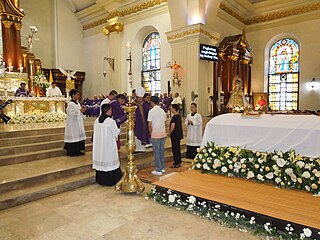
A Requiem or Requiem Mass, also known as Mass for the dead or Mass of the dead, is a Mass of the Catholic Church offered for the repose of the soul or souls of one or more deceased persons, using a particular form of the Roman Missal. It is usually celebrated in the context of a funeral.

Roméo et Juliette is a seven-movement symphonie dramatique for orchestra and three choruses, with vocal solos, by French composer Hector Berlioz. Émile Deschamps wrote its libretto with Shakespeare's play as his base. The work was completed in 1839 and first performed on 24 November of that year, but it was modified before its first publication, in 1847, and modified again for the 2ème Édition of 1857, today's reference. It bears the catalogue numbers Op. 17 and H. 79. Regarded as one of Berlioz's finest achievements, Roméo et Juliette is also among his most original in form and his most comprehensive and detailed to follow a program. The vocal forces are used in the 1st, 5th and 7th movements.
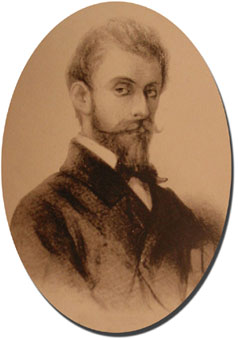
Louis Étienne Ernest Reyer was a French opera composer and music critic.
A funeral march, as a musical genre, is a march, usually in a minor key, in a slow "simple duple" metre, imitating the solemn pace of a funeral procession. Some such marches are often considered appropriate for use during funerals and other sombre occasions, the best-known example being the third movement of Chopin's Piano Sonata No. 2. Handel uses the name dead march, also used for marches played by a military band at military funerals.

Lélio, ou Le retour à la vie, Op. 14b, is a work incorporating music and spoken text by the French composer Hector Berlioz, intended as a sequel to his Symphonie fantastique. It is written for a narrator, solo tenor and baritone, mixed chorus, and an orchestra including piano.
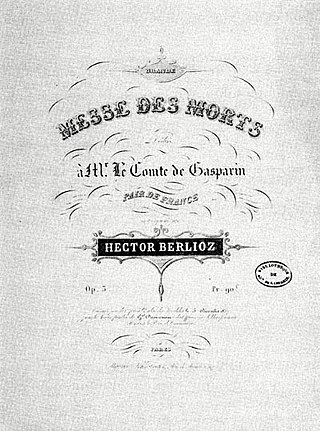
The Grande Messe des morts, Op. 5, by Hector Berlioz was composed in 1837. The Grande Messe des Morts is one of Berlioz's best-known works, with a tremendous orchestration of woodwind and brass instruments, including four antiphonal offstage brass ensembles. The work derives its text from the traditional Latin Requiem Mass. It has a duration of approximately ninety minutes, although there are faster recordings of under seventy-five minutes.

Elena Olegovna Firsova is a Russian composer.

Hamlet is a grand opera in five acts of 1868 by the French composer Ambroise Thomas, with a libretto by Michel Carré and Jules Barbier based on a French adaptation by Alexandre Dumas, père, and Paul Meurice of William Shakespeare's play Hamlet.

Ophelia, a character in William Shakespeare's drama Hamlet, is often referred to in literature and the arts, often in connection to suicide, love, and/or mental instability.
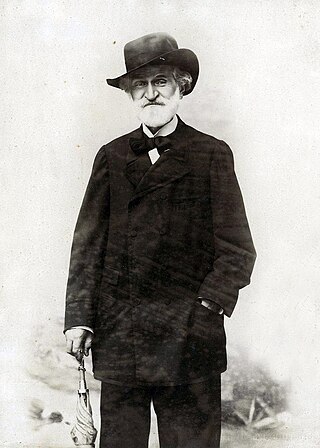
The Quattro pezzi sacri are choral works by Giuseppe Verdi. Written separately during the last decades of the composer's life and with different origins and purposes, they were nevertheless published together in 1898 by Casa Ricordi. They are often performed as a cycle, not in chronological sequence of their composition, but in the sequence used in the Ricordi publication:
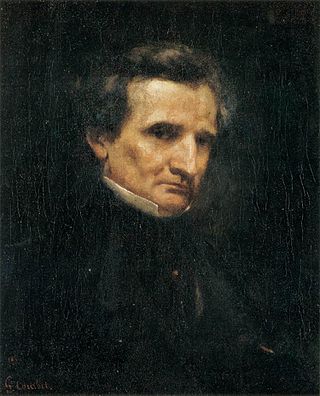
L'enfance du Christ, Opus 25, is an oratorio by the French composer Hector Berlioz, based on the Holy Family's flight into Egypt. Berlioz wrote his own words for the piece. Most of it was composed in 1853 and 1854, but it also incorporates an earlier work La fuite en Egypte (1850). It was first performed at the Salle Herz in Paris on 10 December 1854, with Berlioz conducting and soloists from the Opéra-Comique: Jourdan (Récitant), Depassio (Hérode), the couple Meillet and Bataille.

French composer Hector Berlioz wrote a number of "overtures", many of which have become popular concert works. They include true overtures, intended to introduce operas, but also independent concert overtures that are in effect the first orchestral tone poems.

The French composer Hector Berlioz made four attempts at winning the Prix de Rome music prize, finally succeeding in 1830. As part of the competition, he had to write a cantata to a text set by the examiners. Berlioz's efforts to win the prize are described at length in his Memoirs. He regarded it as the first stage in his struggle against the musical conservatism represented by the judges, who included established composers such as Luigi Cherubini, François-Adrien Boieldieu and Henri-Montan Berton. Berlioz's stay in Italy as a result of winning the prize also had a great influence on later works such as Benvenuto Cellini and Harold en Italie. The composer subsequently destroyed the scores of two cantatas almost completely and reused music from all four of them in later works. There was a revival of interest in the cantatas in the late 20th century, particularly Cléopâtre, which has become a favourite showcase for the soprano and mezzo-soprano voice.
Hermann Reutter was a German composer and pianist who worked as an academic teacher, university administrator, recitalist, and accompanist. He composed several operas, orchestral works, and chamber music, and especially many lieder, setting poems by authors writing in German, Russian, Spanish, Icelandic, English, and ancient Egyptian and Greek, among others.
The orchestral song is a late romantic genre of classical music for solo voices and orchestra.
The Music for the Requiem Mass is any music that accompanies the Requiem, a Mass in the Catholic Church for the deceased. It has inspired a large number of compositions, including settings by Mozart, Berlioz, Donizetti, Verdi, Bruckner, Saint-Saëns, Dvořák, Fauré and Duruflé. Originally, such compositions were meant to be performed in liturgical service, with monophonic chant. Eventually the dramatic character of the text began to appeal to composers to an extent that they made the requiem a genre of its own, and the compositions of composers such as Verdi are essentially concert pieces rather than liturgical works.
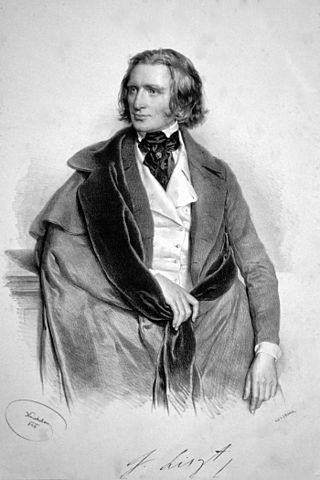
Les quatre élémens, S.80, is a cycle of four choral pieces by Franz Liszt, to words by Joseph Autran. The cycle was composed in 1844–48, originally with piano accompaniment, later orchestrated. The title is an allusion to the Ancient Greek elements: earth, air, water, and fire. As an afterthought, Liszt composed an overture for the cycle in 1849–50, but this was instead revised to become his symphonic poem Les préludes.













